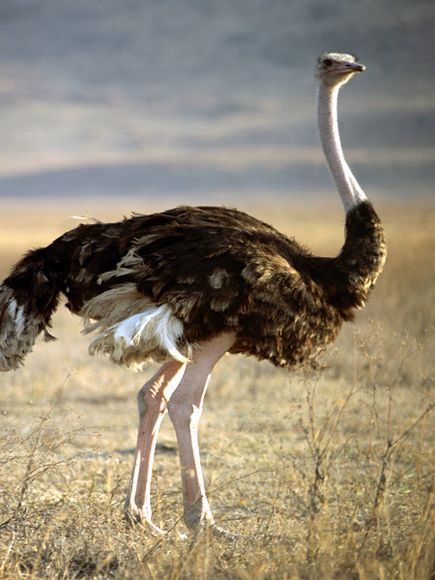
Kenya animals: Ostrich
The flightless ostrich is the world’s largest bird. They roam African savanna and desert lands and get most of their water from the plants they eat.
Though they cannot fly, ostriches are fleet, strong runners. They can sprint up to 43 miles (70 kilometers) an hour and run over distance at 31 miles (50 kilometers) an hour. They may use their wings as “rudders” to help them change direction while running. An ostrich’s powerful, long legs can cover 10 to 16 feet (3 to 5 meters) in a single stride. These legs can also be formidable weapons. Ostrich kicks can kill a human or a potential predator like a lion. Each two-toed foot has a long, sharp claw.
Ostriches live in small herds that typically contain less than a dozen birds. Alpha males maintain these herds, and mate with the group’s dominant hen. The male sometimes mates with others in the group, and wandering males may also mate with lesser hens. All of the group’s hens place their eggs in the dominant hen’s nest—though her own are given the prominent center place. The dominant hen and male take turns incubating the giant eggs, each one of which weighs as much as two dozen chicken eggs.
Contrary to popular belief, ostriches do not bury their heads in the sand. The old saw probably originates with one of the bird’s defensive behaviors. At the approach of trouble, ostriches will lie low and press their long necks to the ground in an attempt to become less visible. Their plumage blends well with sandy soil and, from a distance, gives the appearance that they have buried their heads in the sand.
Ostriches typically eat plants, roots, and seeds but will also eat insects, lizards, or other creatures available in their sometimes harsh habitat.